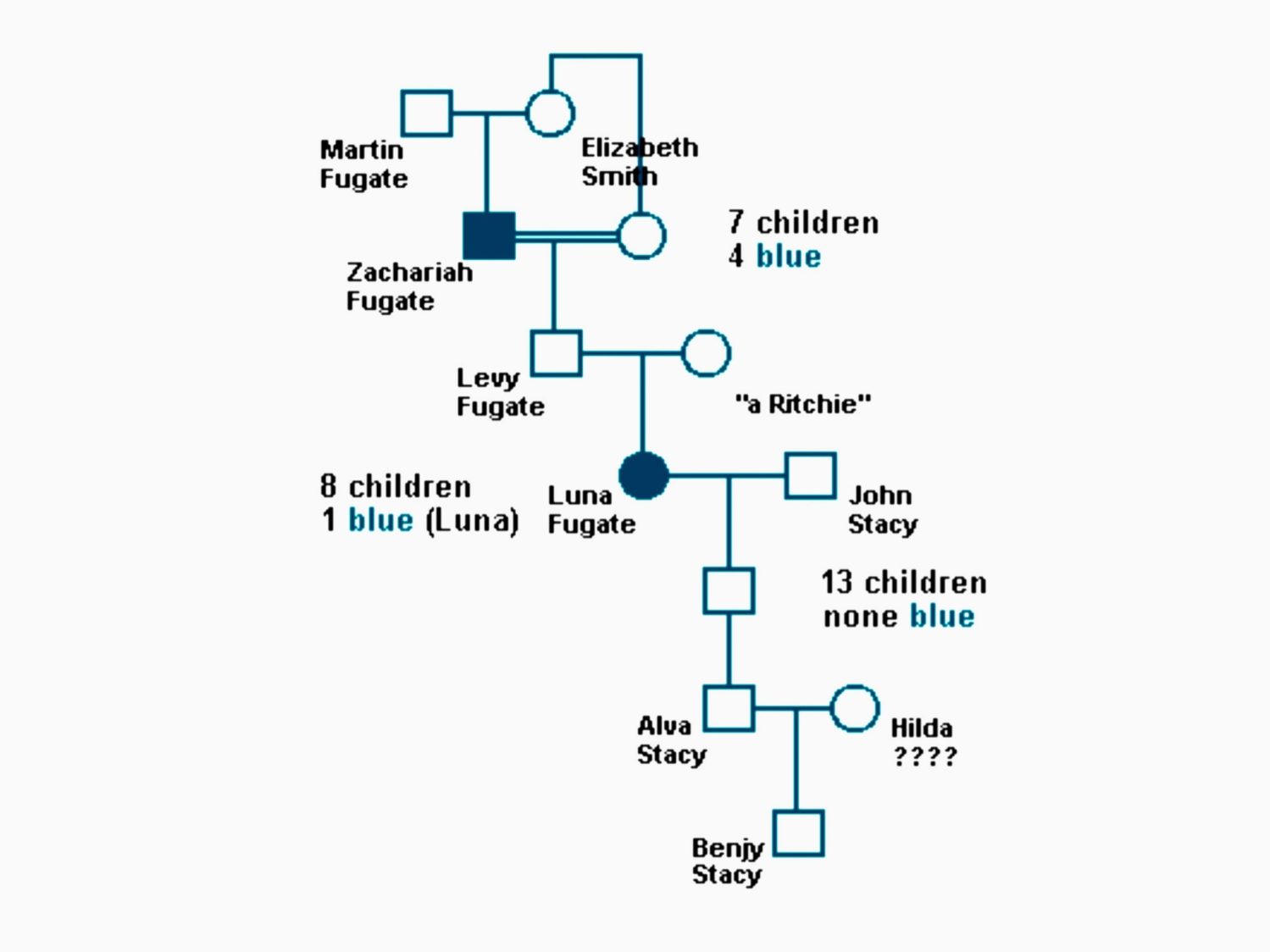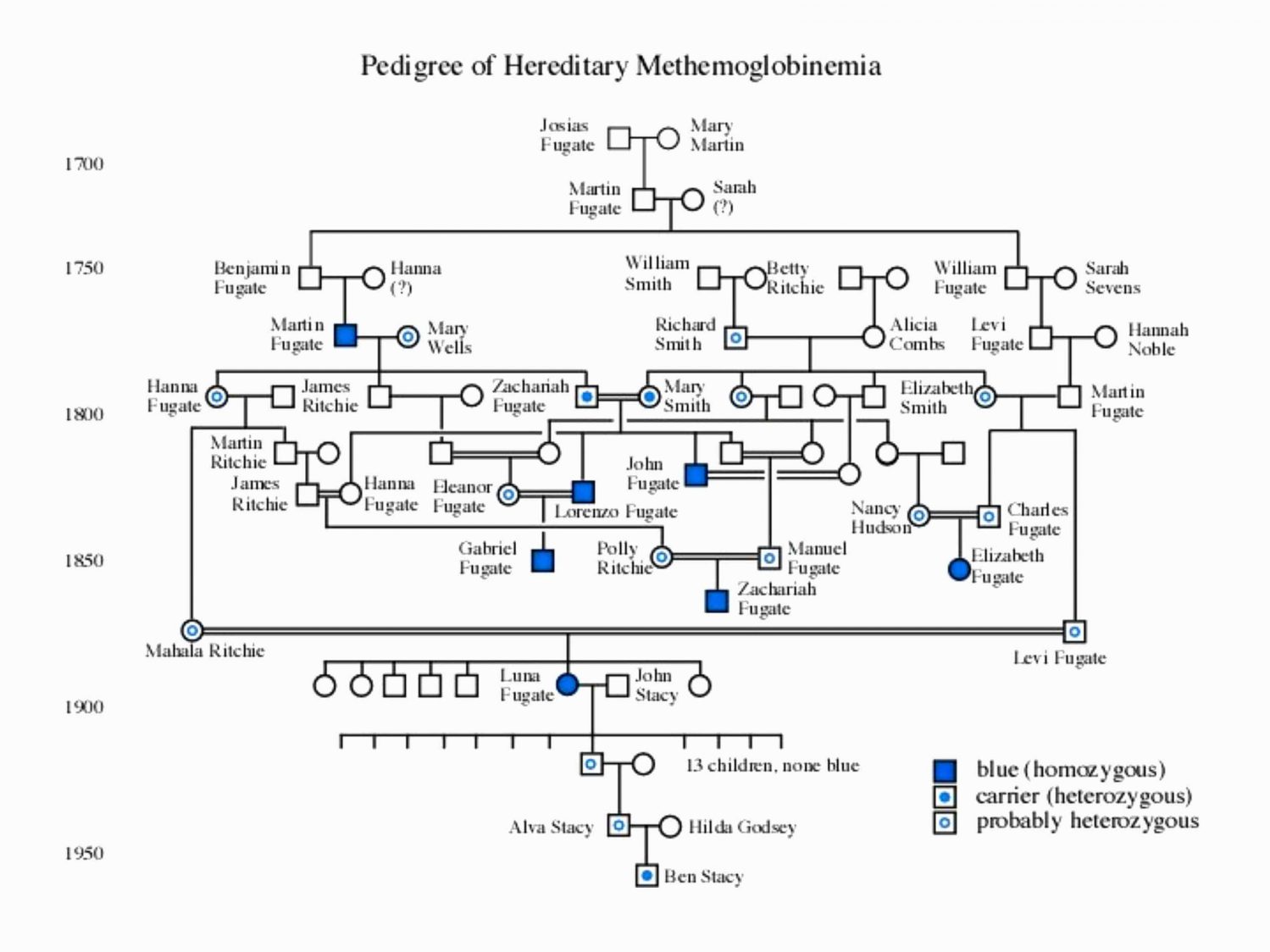The Blue People of Kentucky were a family from Kentucky's history who were primarily born with a rare genetic disorder that caused their skin to turn blue.
For close to two centuries, the Fugate family, known as the "Blue People of Kentucky," lived in the Troublesome Creek and Ball Creek regions in the hills of eastern Kentucky. They passed down their distinct blue-skinned trait through generations, mainly isolating themselves from the outside world. They have gained widespread recognition as the "Blue People of Kentucky."
The Story Of The Blue People Of Kentucky
There are two different accounts of the first Blue Skinned man in the Kentucky family. However, both stories agree that the person was named "Martin Fugate" and that he was an orphaned French man who later established his family in Hazard, Kentucky in the United States.

During that time, eastern Kentucky was a secluded rural region where Martin's family and other nearby families had settled. There were no roads and the area was not connected to the railroad until the early 1910s. As a result, intermarriage between families was a common occurrence among the people living in that isolated part of Kentucky.
The two stories have a similar structure, but the main difference lies in their timeline, which is outlined below:
The First Story Of The Blue People Of Kentucky
According to this story, Martin Fugate lived in the early nineteenth century and married Elizabeth Smith, a woman from a neighboring clan with whom the Fugates intermarried. Elizabeth was reportedly as pale and white as the mountain laurel that blooms every spring around the creek hollows and she also carried the genetic disorder that caused blue skin. Martin and Elizabeth established their home on the banks of Troublesome Creek and had seven children, four of whom were said to have blue skin.

The Fugates often married other Fugates or even first cousins and those who lived closest to them. This resulted in an increase in the clan and many descendants being born with the blue skin genetic disorder. The Blue People of Kentucky continued to live in the Troublesome Creek and Ball Creek areas well into the 20th century.
The Second Story Of The Blue People Of Kentucky

Another story claims that there were three people named Martin Fugate in the Fugate family tree who lived between 1700 and 1850. The first blue Skinned person was the second Martin Fugate, who lived in the late 18th century or around 1750. He married Mary Wells, who also carried the disease.
According to the second story, Martin Fugate, who lived in the early 19th century and married Elizabeth Smith in the first story, was not blue-skinned. However, Elizabeth still carries the disease as in the first story and the rest of the second story is similar to the first.
What Actually Happened To The Blue Skinned People Of Troublesome Creek?
The Fugates surprisingly lived long lives, 85-90 years, without any other health issues except for the blue skin genetic disorder that greatly impacted their lifestyle. They were embarrassed about their blue skin. There were many theories in the hollows about what caused the blue skin, such as heart disease, a lung disorder, or even the suggestion that "their blood is just a little closer to their skin." However, no one knew for sure and doctors rarely visited the remote creek settlements where most of the "Blue Fugates" lived until the 1950s.
In the 1950s, two Fugates approached Madison Cawein III, a young hematologist at the University of Kentucky's medical clinic, seeking a cure for their blue skin.
Using research from his previous studies on isolated Alaskan Eskimo populations, Cawein was able to determine that the Fugates had a rare hereditary blood disorder that resulted in high levels of methemoglobin in their blood, a condition called methemoglobinemia.
Methemoglobin is a form of the protein haemoglobin, which is responsible for carrying oxygen in the blood. While healthy haemoglobin is red and functional, methemoglobin is a non-functional blue version. In most Caucasians, the red haemoglobin in their blood is visible through their skin, giving it a pink tint.
Doctor Cawein used methylene blue as an antidote for blue skin because it is an electron donor that can convert methemoglobin back to normal. It had been successfully and safely used in other cases and acts quickly.
Cawein injected the blue-skinned people with 100 milligrams of methylene blue, which quickly reduced their blue coloring and relieved their symptoms. He also provided them with a supply of methylene blue tablets to take daily, as the drug's effects are temporary and it is normally excreted in the urine. He published his research in the Archives of Internal Medicine in 1964.
As travel increased in the mid 20th century, the families with the recessive gene for the disease dispersed over wider areas, reducing the prevalence of the gene in local populations and the likelihood of inheriting the disease.
Benjamin Stacy, born in 1975, is the last known descendant of the Fugates with the blue skin characteristic. He lost this trait as he grew older, but the blue tint may still appear when he is cold or angry. Most other Fugate family descendants have also lost their blue coloring.
Dr. Madison Cawein conducted research in Kentucky to understand how the Fugates had inherited the recessive methemoglobinemia (met-H) gene and developed the blue skin disorder, which was passed down through generations. He pieced together a comprehensive account of the condition.
Some Other Similar Cases
Two other men known as the "blue men of Lurgan" had blue skin due to methemoglobinemia. They were treated by Dr. James Deeny in 1942 with a course of ascorbic acid and sodium bicarbonate. The first man's skin returned to normal in 12 days, while the second man's skin returned to normal over the course of a month.
Did You Know Overtaking Silver Can Also Cause Our Skin To Turn Grey Or Blue And It Is Highly Toxic To Humans?
Argyria, also known as "Blue Man Syndrome," is a condition caused by excessive exposure to silver or silver dust. It results in bluish-purple or purple-grey skin discoloration.

Ingesting or inhaling large amounts of silver over a long period can cause silver compounds to accumulate in various parts of the body in animals and humans, leading to grey or blue-grey discoloration of the skin and other tissues.
Argyria can occur in people who work in factories that manufacture silver products and can be caused by inhaling silver or its compounds. Silver is also used in some medical devices due to its antimicrobial properties. While Argyria is not life-threatening and can be treated with medication, excessive intake of any chemical compound can be dangerous and increase health risks.



